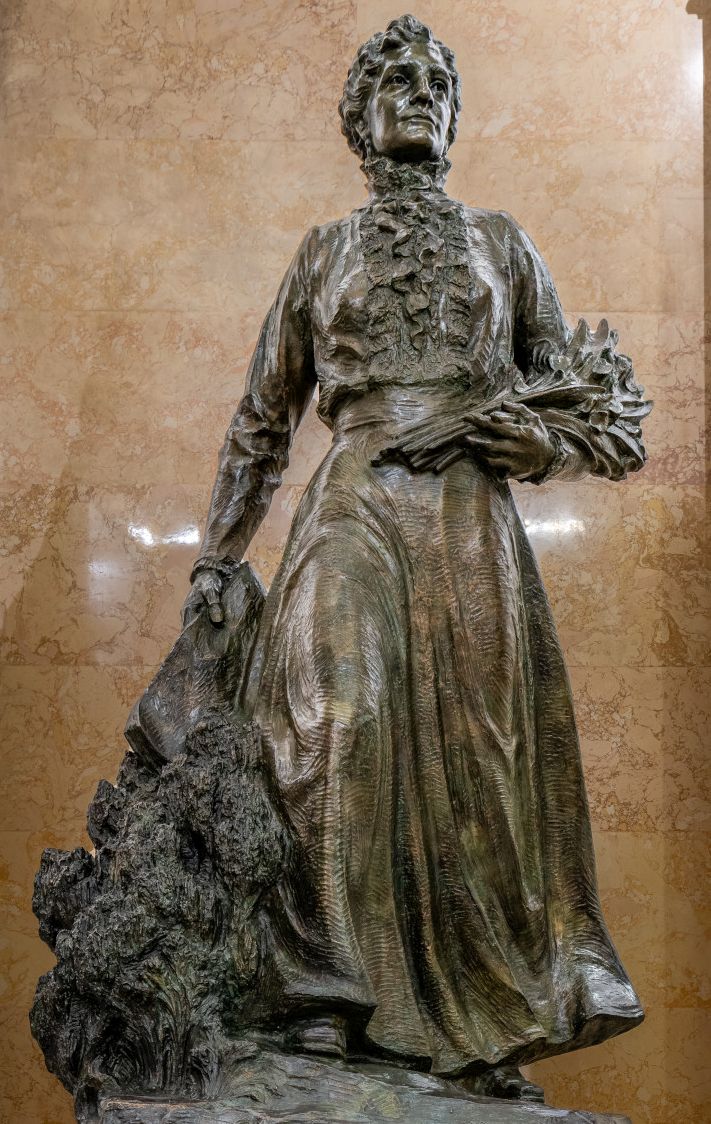Authors:
Historic Era: Era 6: The Development of the Industrial United States (1870-1900)
Historic Theme:
Subject:
April 1973 | Volume 24, Issue 3


Authors:
Historic Era: Era 6: The Development of the Industrial United States (1870-1900)
Historic Theme:
Subject:
April 1973 | Volume 24, Issue 3

Wyoming. The name itself recalls the Old West, where a man was a man. The virile pioneer, eyes squinted against the prairie sun or mountain snowstorm, muscles tense, ready to overcome any human or elemental opposition. The rough, tough cowboy, drawing fast, drinking hard, dying young.
With these images in mind, consider Wyoming’s contribution to Statuary Hall in the United States Capitol. The state’s statue stands among marble heroes and bronze statesmen—and it wears a skirt. It is one Esther Hobart Morris, proclaimed by the legend on the base of her statue to be:
It all seems rather pious, yet astonishing. Why should American women first win the vote in Wyoming, of all places? Cutting through the legends, which are numerous and romantic, one finds that the act did not result from a failure of male authority. Wyoming women did not win suffrage so much as men gave it to them. Men passed the law and set up the tests for it, with some notion that women deserved equality, with the hope that suffrage would stimulate migration by women to femalepoor Wyoming, but also with the attitude that passing and testing the law was a splendid joke, a bit of comic relief in the midst of the anxieties and hazards of frontier life.
William H. Bright of South Pass City introduced the suffrage bill in the 1869 territorial legislature. A forty-six-year-old saloonkeeper and miner who had never been to school, Bright was a reserved man who left little record of himself for the popular imagination to seize upon, and no descendants in Wyoming to tout his role.
On the other hand, lantern-jawed Esther Morris, a lady of heroic (sixfoot) proportions, easily captured the public eye. And two of her sons later became prominent citizens in the state and brought attention to the part their mother had played.
In 1869 Esther Morris travelled from her home in Illinois high into the Wyoming mountains to South Pass City to join her second husband, John, and her three sons, who had arrived earlier, attracted by rumors of fantastic gold discoveries in the Sweetwater Mines. As the legend tells it, Mrs. Morris went to South Pass fired with feminist fervor, partly because she had heard Susan B. Anthony speak in Illinois. And just as important